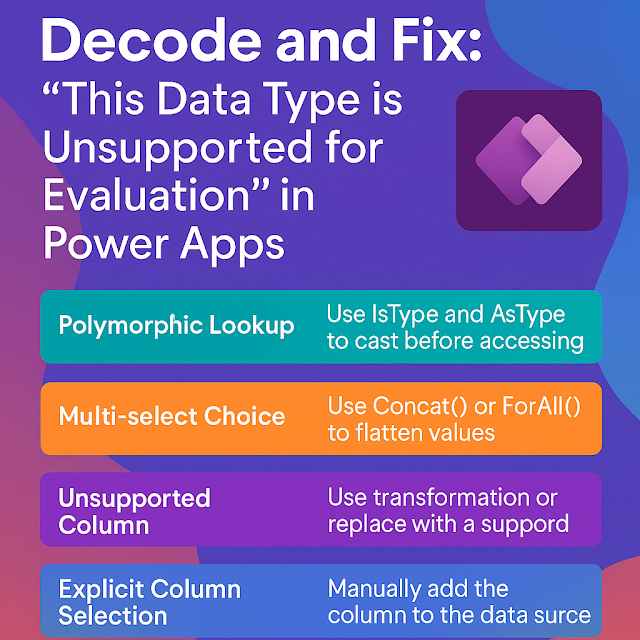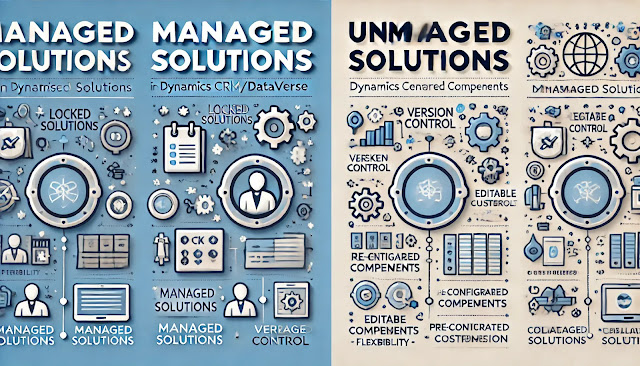From Data to Insight: The Role of Profiles and Measurements in Dynamics 365
In Dynamics 365, Profiles and Measurements play a crucial role in understanding and analyzing customer data and business performance. A Profile represents a unified view of an entity—such as a customer, lead, or account—by consolidating data from multiple sources like CRM, ERP, and web interactions. It provides a 360-degree perspective that helps organizations personalize engagement, segment audiences, and make informed decisions. On the other hand, a Measurement defines and tracks key metrics related to customer behavior or operational performance, such as total purchases, email open rates, case resolution time, or customer lifetime value. Together, profiles and measurements enable businesses to transform raw data into meaningful insights, driving better customer understanding, improved targeting, and data-driven decision-making across the Dynamics 365 ecosystem.
In Dynamics 365 (Customer Insights - Journeys or Customer Service Insights), the concepts of Profiles and Measurements are key components for understanding and analyzing customer interactions, performance, and behavior. These are particularly important in Customer Insights (Data or Journeys), Sales Insights, and Customer Service Insights modules.
1. Profile in Dynamics 365
A Profile represents a single entity or record that stores attributes and information about a person, organization, or object.
Purpose:
Profiles are used to centralize data related to an entity, such as a customer, contact, lead, or account, and combine it with other data sources to create a unified view.
Here's a breakdown of what a Profile means in Dynamics 365 Customer Insights:
1. Data Unification:
- Multiple Data Sources: In a typical business, customer data resides in many different systems: CRM (Dynamics 365 Sales/Service), marketing automation (Dynamics 365 Marketing), ERP, e-commerce platforms, web analytics, mobile apps, customer support systems, and third-party data providers.
- Identity Resolution: The first step in creating a profile is data ingestion and unification. This process takes data from all these disparate sources and intelligently identifies records that belong to the same individual or entity. This involves matching based on email addresses, phone numbers, customer IDs, names, etc., and resolving conflicts when information differs.
2. Golden Customer Record:
- The output of this unification process is a "Golden Customer Record" or a Unified Customer Profile. This is a single, consistent, and holistic view of each customer.
- This profile contains all known attributes about that customer, regardless of where the data originated. This could include:
- The unified profile serves as the bedrock for all subsequent analytical and activation efforts. Without a single, reliable view of the customer, it's difficult to get accurate insights or deliver personalized experiences.
- Segments: Profiles are used to create dynamic customer segments (e.g., "High-value customers who haven't purchased in 30 days").
- Measurements (KPIs): As shown in the previous diagram, these profiles are then used as the basis for calculating "Measurements" or Key Performance Indicators (KPIs) like Customer Lifetime Value (LTV), churn risk, or average order value.
- AI/ML Models: Profiles feed into AI and Machine Learning models to predict customer behavior, recommend products, or identify potential churners.
- Personalization: The rich data within a unified profile allows for highly personalized marketing campaigns, tailored service interactions, and relevant product recommendations across all touchpoints.
Examples:
Customer Profile: Contains demographic information (name, age, location), behavioral data (purchase history, website visits), and engagement data (emails opened, events attended).
Lead Profile: Includes attributes like source, industry, engagement score, and conversion likelihood.
Unified Customer Profile (in Customer Insights - Data): Combines data from multiple systems (CRM, ERP, websites, etc.) into a single, 360° view of a customer.
Key Benefits:
- Provides a holistic view of customers or entities.
- Enables personalized experiences in marketing and service.
- Supports segmentation and AI-driven predictions (like churn risk or next best action).
2. Measurement in Dynamics 365
A Measurement defines how specific activities or interactions are quantified, tracked, and analyzed within the system.
Purpose:
Measurements are used to evaluate performance, engagement, or outcomes based on defined metrics—helping businesses make data-driven decisions.
- In Dynamics 365 Customer Insights - Journeys:
- Email open rate
- Click-through rate
- Form submissions
- Event attendance
- In Customer Insights - Data:
- Total purchases per customer
- Average order value
- Customer lifetime value (CLV)
- Number of support cases
- In Sales Insights or Customer Service Insights:
- Case resolution time
- Lead-to-opportunity conversion rate
- Agent response time
- Helps measure customer engagement and campaign effectiveness.
- Allows organizations to track KPIs (Key Performance Indicators).
- Enables comparative analysis over time or across segments.
How They Work Together
Example Scenario
In Dynamics 365 Customer Insights, you may:
- Create a Customer Profile combining CRM and e-commerce data.
- Define Measurements such as “Total Transactions” or “Average Purchase Value.”
- Use these measurements to build segments like “High-value customers who purchased more than 5 times in the last 6 months.”
Summary:
In today’s data-driven world, organizations rely on actionable insights to understand customers, optimize operations, and make smarter business decisions. Dynamics 365 bridges the gap between raw data and meaningful insights through its powerful Profiles and Measurements features. Profiles unify data from multiple sources—such as CRM, ERP, and digital interactions—into a single, comprehensive customer view. Measurements, on the other hand, quantify key performance indicators like revenue, engagement, and service quality to help track business success over time. Together, they enable businesses to personalize experiences, predict behavior, and drive data-informed strategies with confidence. This blog explores how these capabilities work, why they matter, and how they transform Dynamics 365 into an intelligent insight engine for modern enterprises.

















Comments
Post a Comment